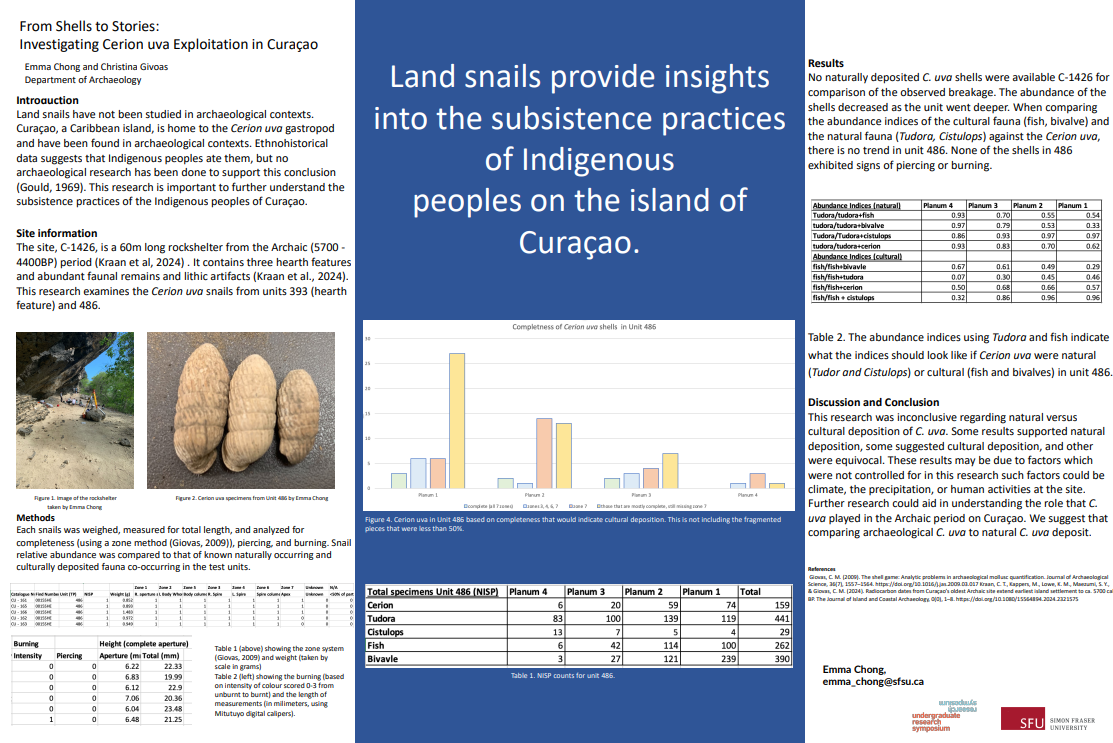Human Consumption of land snails on Curaçao
Main Article Content
Abstract
Cerion uva (commonly known as Peanut snails) are found in archaeological context on the Caribbean island of Curaçao. Ethnohistorical data suggests C. uva snails were consumed by Curaçao’s Indigenous peoples. However, there has been no archaeological data to confirm nor deny this claim. Past archaeological studies in Curacao are mostly restricted to settlements and rock art. The Curaçao Cultural Landscape Project is one initiative aiming to broaden our knowledge of the past, bringing together multiple disciplines in archaeological research – zooarchaeology, paleoecology, geoarchaeology. As part of this project, my honours thesis contributes to our understanding of subsistence practices in Curaçao, during the Archaic Period (ca. 5500-1400 BP). Using criteria developed from wider land snail studies (e.g. size, apex presence, burning, and location) my honours thesis tests whether C. uva snails were exploited by people or deposited naturally. By furthering research on lands snails in Curaçao, more information about the palaeo-environmental conditions can be uncovered. This can lead to more insight into the diet of Indigenous peoples of Curaçao. It is important to create a solid foundation in distinguishing dietary from non-dietary materials in the archaeological record.
Faculty Supervisor: Dr. Christina Giovas, Department of Archaeology, Simon Fraser University
Article Details

This work is licensed under a Creative Commons Attribution-NonCommercial-NoDerivatives 4.0 International License.

